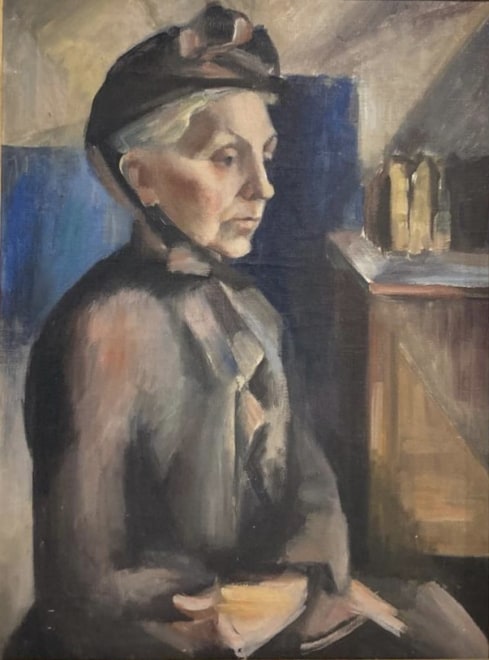Provenance
Private collection
Note: Bruce Arnold notes that Mainie Jellett and Evie Hone probably first met in London in the autumn of 1917, when Jellett began to study at the Westminster School with Walter Sickert. Their friendship and their committed engagement with cubism and abstraction, remains a crucial element in the development of modern Irish art, yet the present painting remains perhaps the only visual record of this relationship.
In 1921, Jellett joined Hone in Paris, where the latter was already a student in the atelier of André Lhote; his teaching became Jellett’s ‘second revolution’, and his influence is almost immediately apparent in the geometric stylisation, formal analysis and pictorial construction of her paintings and drawings made in 1921.
‘Portrait of Brady’ was painted around 1921, during this intense period of study. Evie Hone had suffered from polio as a child and Brady accompanied her as a nurse and companion to London and then to Paris. This portrait retains a great sense of intimacy; despite the close friendship and mutual respect between Jellett and Hone they never appear to have painted or drawn each other. In painting Brady, Jellett referred to the presence in her life of her close friend and colleague, Hone, but through the figure of the nurse she also discreetly notes the physical struggles of her friend and pays tribute to Brady herself, whom Jellett must have known well and who helped to facilitate Evie Hone’s travels and studies.
There is a remarkable collision, too, between this discreet and respectable Irish lady and Jellett’s modernist portrayal of her, which would obviously still have been extremely radical at this time. In the context of modernist Irish art the painting is also extremely unusual in raising issues around disability and gender. Jellett gives Brady a status unusual in Irish art of this time to female figures of her social position, so the painting is a radical document both artistically and socially.
The sitter was identified from a preparatory drawing in the Jellett Archives at the National College of Art and Design, and this painting was first exhibited with its correct title in 1997 at a centenary exhibition of Mainie Jellett’s work, before being included in the 2013 exhibition ‘Analysing Cubism’ at the Irish Museum of Modern Art and the F.E. McWilliam Gallery.
